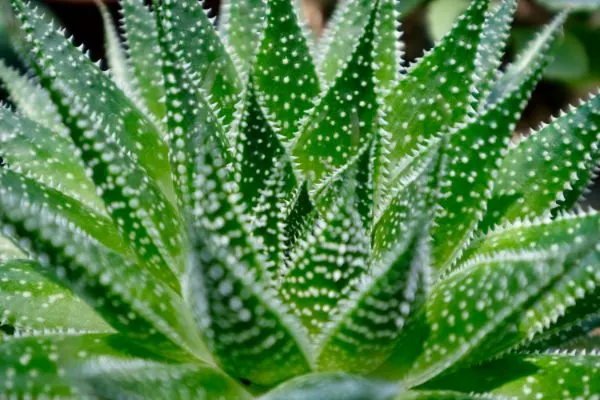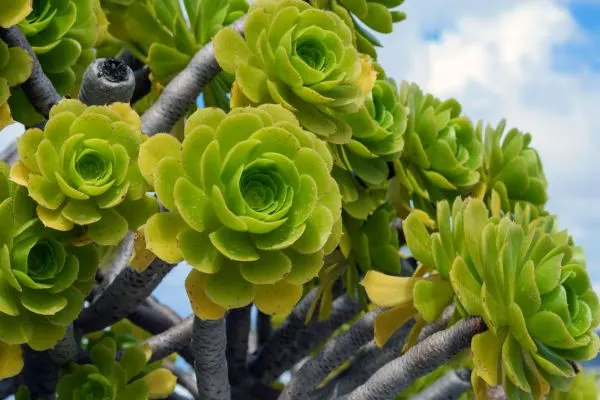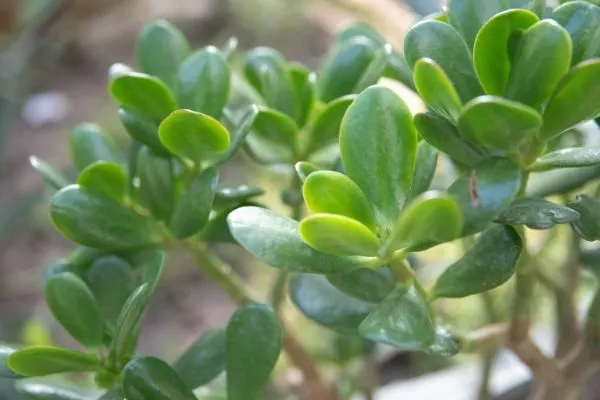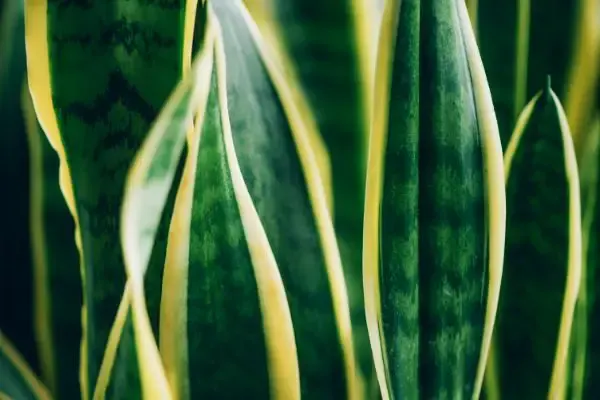There are 11 types of succulents that grow tall in this list with one of them being able to reach up to 65 fee it height!
When you think of succulent plants, usually your thoughts go to a tiny cactus, a sprig of aloe you’ve nursed, or maybe even those colorful, tiny favorites known as ‘lithops’ or ‘stone plants’. The thing is, succulents don’t just come in tiny packages, and today we’re going to share with you some types of succulents that will grow up to be tall in the right conditions.
To keep things useful, we’ll have a good range of succulent sizes, so that you’ll have a lot of new indoor options if that should strike your fancy. Just keep in mind that each of these will grow at least a few feet and some – quite a bit more!
If you’re ready, then let’s talk about types of succulents that grow up tall!
Some lovely Types of succulents that grow tall
Succulents are hardy – it’s one of the reasons that we pick them, after all – but the ones that many of us are used to are really quite small. In this section, we’re going to share some succulents that can grow anywhere from a few modest feet, right up to some towering succulents that you’ll only want to grow outside!
The plants have mastered the art of living rough and tumble desert locales and while the smallest certainly have the advantage, you might just be surprised at how big succulents can really get in the wild! Let’s get this list started and you can see for yourself!
Table of Contents
Types of succulents that grow tall
1. African Milk Tree

- Difficulty Level: Beginner
- Family: Euphorbiaceae
- Scientific Name: Euphorbia trigona
- Other Names: Cathedral cactus, Good Luck cactus, Friendship cactus
Care and information
African Milk Trees look like cacti, but they tend to have more of a ‘spear’ or ‘leaf’ shape to them that really imparts an exotic type of charm. They are definitely on the tall side – growing up to 10 feet outdoors or 6 feet if you raise them inside.
Fast-growing, these succulents are often used outside as hedges, and of course their prickly nature makes them quite well-suited for providing a beautiful, hardy barrier that needs very little maintenance to maintain.
As far as soil preferences, African Milk trees do well in a mix of 2 parts regular potting soil, perlite (or gravel) for drainage, and one part peat moss. Terracotta pots are good with these plants, as they allow excess water to easily escape, and ideally you should water it once a week during the warmer months and once a month in winter (when the top inch of soil is dry).
Full sunlight is okay with these plants, although it’s better to put them in an area where they will get a little shade sometimes during the day – they’re robust, but they like a little break sometimes, too!
2. Aloe Aristota

- Difficulty Level: Beginner
- Family: Asphodelaceae
- Scientific Name: Aristaloe aristata
- Other Names: Lace Aloe, Torch plant
Care and information
Aloe Aristota is a succulent that forms goodly-sized rosettes, so that it’s about 12- 15 inches tall in the summer, and from 1 to 2 feet wide. This makes them a planting choice that is definitely big enough to be noticeable, but which won’t hog all your interior space if you choose to host one.
The best soil for an Aloe Aristota is a sandy, well-draining cactus compost, and you won’t need to water this at all from September to March. That said, in the warmer months, simply water it whenever the top 2 inches of soil are dry, and you want to give it as much full-sun as you can – with a south-facing window being just about perfect. If you can’t do that, it will grow in bright, indirect sunlight, but it won’t be as robust!
3. Aloe Vera

- Difficulty Level: Beginner
- Family: Asphodelaceae
- Scientific Name: Aloe barbadensis miller
- Other Names: Aloe barbadensis miller is the full and official name of this plant.
Care and information
Aloe Vera is not thought of as a big succulent, but while they typically grow 12 – 24 inches tall, some will get as big as 3 feet and it’s really a sight to see. Aloe Vera is also quite useful to have on hand for its medicinal purposes, making these beauties quite the practical plant to host in your home.
While you can go with a commercial succulent soil, a loamy, sandy soil mix, with a bit of perlite or gravel for proper drainage will also do just fine. You’ll want to make sure that it has a neutral pH, however, in order to avoid the perils of potential root rot. Beyond this, you should water your Aloe only when the top 2 inches of soil are dry, and you’ll want to make sure that it gets a minimum of 6 hours of direct sunlight every day.
Without enough sunlight, it will still grow, but it won’t be strong enough to support itself, so be sure to place it with this important fact in mind.
4. Baobab

- Difficulty Level: Beginner
- Family: Malvaceae
- Scientific Name: Adansonia digitata
- Other Names: Monkey Bread tree, Tree of Life
Care and information
As far as tall succulents, the African Baobab tree definitely takes the cake. Growing as tall as 65 feet outdoors, these trees may be grown during their youth indoors or even pared and managed much like a Bonsai tree.
Revered for their medicinal value, as well as their ability to thrive in places few other plants can endure. Baobabs are definitely an exotic succulent option and incidentally, you can also see them in Australia, where they were transplanted many generations ago.
For Baobabs, sandy and loamy soil is best, but not too loamy – you can add a bit of coarse sand if needed to balance your soil base. As far as water, your baobab just needs watering once a month, and only during the warmer months – the trunks will store spare water, as these trees are used to doing a lot with very little. Sunlight is very important with Baobabs and they should be placed where they can get a good 16 hours a day, or at least as much as possible.
5. Candelabra Cactus

- Difficulty Level: Beginner
- Family: Euphorbiaceae
- Scientific Name: Euphorbia lactea
- Other Names: Mottled Spurge, Dragon Bones tree
Care and information
The Candelabra cactus hails from southeast Asia and also has the fun nickname of ‘the Dragon Bones tree’ and it’s easy to see why. As this prickly succulent grows, it sprouts arms that look a bit like a candelabra, but also quite like a spiky green ribcage! In the wild, these lovely succulents can reach heights of up to 15 feet, but indoors they will usually grow to be only 1 or two.
Clay, loam, or sandy soil is fine, provided that it is well-draining, or you could just go with a commercial succulent mix. Watering is minimal, as with all succulents, and this one is especially low maintenance. Every 2 to 3 weeks will be just about perfect for watering, you’ll just want to make sure that the soil has completely dried out before you water it again to keep root rot at bay.
Beyond this, this plant likes full sunlight, or at least full sunlight for a space with a few periods of shade.
6. Elephant bush

- Difficulty Level: Beginner
- Family: Didiereaceae
- Scientific Name: Portulacaria afra
- Other Names: Porkbush, Dwarf Jade
Care and information
While it can grow as tall as 15 feet in the wild, the Elephant bush is actually quite manageable if you would like to grow it in your home. Often grown as an alternative to jade plant, the pretty, little rounded leaves on this succulent shrub live up to their name – this is genuine ‘Elephant forage’ food!
If you would like to grow a little piece of Africa in your home, this succulent is fondest of sandy, well-draining soil, and these drought-resistant plants only need to be watered when the soil in their pot has completely dried. As far as sunlight, full or partial is best, with an ideal amount being 6 hours of full sunlight every day.
7. Hanging Chain Cholla

- Difficulty Level: Beginner
- Family: Cactaceae
- Scientific Name: Cylindropuntia fulgida
- Other Names: Jumping cholla
Care and information
Have you ever wished for an antisocial succulent that would occasionally drop bits of itself and spike visitors (oh come on, you know you have!)? If so, then look no further then the Hanging Chain Cholla. More commonly known as the ‘Jumping Cholla’, this species actually propagates by detaching small, hooked bundles of itself, which can root immediately and spread this succulent all over the place!
Touch can set it off too, believe it or not, although you needn’t worry much – these succulents are found in the Sonoran desert and in arid parts of the southern United States. The ‘Hanging Chain’ nickname, by the way, comes from the fruits of the cactus, which hang rather uniquely in a chain-like formation!
You can actually cultivate these Chollas, if you like, and if you do then a standard cactus or succulent soil will do the trick, or you can mix up a sandy, well-draining soil of your own choosing. Full or partial sun will be needed, as well, and as they are drought resistant, you only need to water your attack-cactus once every time the soil completely dries out! It’s low maintenance and possibly a little spiteful fun in case one of your guests has a weird habit of touching the cacti in your home!
8. Irish Rose

- Difficulty Level: Beginner
- Family: Crassulaceae
- Scientific Name: Aeonium arboreum
- Other Names: Golden Aeonium, Tree Aeonium
Care and information
A lovely jade-hued succulent that forms little green roses and golden, star-shaped flowers, the Irish Rose is definitely a looker! Growing to be eventually 3 to 5 feet tall, it falls into the ‘modestly tall’ category, especially in comparison to those tiny succulents in the window that most of us are used to.
If you’d like to raise this beauty yourself, you’re going to need a sandy loam soil, which needs to be well-draining, and if you don’t have any handy, a little potting soil and perlite is also fine – this hardy plant will make do. We should mention that it has shallow roots, so if you’ve got a shallow pot socked away that you haven’t gotten to use in awhile, then the Irish Rose is a perfect fit for it.
Once you’ve housed it in its new soil, this plant actually prefers partial shade to full sunlight, and you should only water it when the top 2 inches of topsoil feel dry to the touch.
9. Jade plant

- Difficulty Level: Beginner
- Family: Crassulaceae
- Scientific Name: Crassula ovata
- Other Names: Friendship plant, Money plant
Care and information
The Jade plant, more commonly known as the ‘Money plant’, is a beautiful succulent that looks like a tiny tree with jade-green, rounded leaves. Outdoors, it’s not quite as tiny – these can get a little over 6 feet tall – but in your home you can expect it to grow between 18 and 30 inches tall.
This is the same ‘Money plant’ that’s spoken of in Feng Shui that is thought to bring you luck in finance, but even if you don’t get a financial windfall from it, it brings a touch of beauty and tranquility to your home that you and your guests will surely appreciate!
While succulent and cacti commercial mixes are best, you can also grow your Jade plant in an all-purpose type potting soil, provided that you add a handful of perlite to ensure proper drainage. Watering requirements for this plant are pretty easy to keep up with – simply water it every 2 weeks during the warmer months, and in the winter and fall you can switch to once every 3 – 4 weeks.
Just check the top 2 inches of soil to make sure it’s dry before watering first, as Jade plants are quite susceptible to root rot if you overwater. After that, all it needs is full sunlight, and your Jade plant will have all it needs to thrive!
10. Joshua tree

- Difficulty Level: Beginner
- Family: Asparagaceae
- Scientific Name: Yucca brevifolia
- Other Names: Yucca Palm, Tree Yucca
Care and information
Named by Mormon Immigrants in the mid-19th century, the Joshua tree is definitely an outdoor succulent and one of the taller ones on our list. These hardy succulents will reach 15 to 30 feet when fully grown and don’t let the name fool you – while they certainly look like trees, they are actually a type of flowering plant known as a ‘monocot’. Like a palm tree, these plants produce clusters of spiky leaves, and the outstretched arms definitely bring a lot of character to this famously-named succulent.
Soilwise, you’ve kind of got a goldmine with this plant, as the poorer the soil quality, the better. This plant will thrive in sandy, loamy, clay, or even rocky soils, as long as they are well draining. Your Joshua tree will also need at least 3 – 6 hours of sunlight and watering is a little weird with this one, but we’ll explain it as best we can.
The Joshua tree is a survivor, in that it’s going to store water to prepare for the worst. When you are first establishing the tree as a new planting, you’ll want to give it approximately 2 gallons of water once or twice the first week.
After that, usually once a month is okay, but you want to watch for flaky, dry soil as your indicator that it’s time to water the plant. You’ll need to stick to this, as root rot is a definite risk if you overwater, but as long as you stick to once a month or when the soil is obviously fully dry, then your famously-named monocot will grow up happy and healthy!
11. Ocotillo

- Difficulty Level: Beginner
- Family: Fouquieriaceae
- Scientific Name: Fouquieria splendens
- Other Names: Coachwhip, Jacob’s Staff, Vine Cactus
Care and information
Ocotillo has an exotic beauty to it and hails from the Sonoran desert of Mexico and Arizona, as well as the Chihuahuan desert of New Mexico in North America! This succulent extends it’s vine-like arms to height ranges of up to 20 feet and when it flowers, it produces lovely scarlet blooms that the birds definitely adore.
You can grow it inside, if you like, as it only grows about 6 to 10 inches every year, and like all succulents it’s very easy to care for. If you are potting it, you’ll need at least a 10 gallon pot, unless you are starting with a simple cutting – in which case a 6-inch pot will work for now.
As far as soil, a mix of gravel and loam will do, or a well-draining sandy soil also does the trick nicely. Watering is best done once a week during the warmer months and once every 2 weeks during the winter. Finally, the Ocotillo likes full, glorious sunlight, so you’ll need a south-facing window if you are growing it indoors, or a nice, sunny spot in your yard.
12. Snake Plant

- Difficulty Level: Beginner
- Family: Asparagaceae
- Scientific Name: Dracaena trifasciata
- Other Names: Mother in Law’s Tongue
Care and information
Like their namesake, Snake plant growth is a little on the sneaky side. That’s because these succulents can grow as little as 1 foot, to as much as 12 feet!
Whatever size you end up with, however, this is a succulent that you’re sure to fall in love with. It produces sword-like leaves, often rimmed in yellow, that really get your attention and add a bit of character wherever you choose to place it. We also really like their other name, although there are some who won’t care for it – this plant is also known as ‘Mother in Law’s tongue’!
The best soil mix is actually a non-soil mix, with a blend of vermiculite, perlite, and peat moss being absolutely ideal for these plants. Moderate sunlight is the best for your Snake plant and during the hottest parts of the summer, you’ll want to make sure that it’s getting at least a little shade.
After that, just water it once a week (or whenever the top 2 inches of soil are dry) and your Snake plant should grow up both happy and healthy!
FAQs
Before we go, we’ve collected a list of frequently asked questions in order to share a little more information on succulents. There are some solid reasons why these succulents tend to reach for the skies, so read on and we’ll tell you all about it!
What is the biggest succulent in the world?

The tallest succulent in the world is the African Baobab, and while we’ve mentioned that you can grow it indoors and even keep it small, much like a bonsai, in their native habitat it’s a very different story. These succulents grow as tall as 65 feet, with a trunk thickness that can be as wide as 109 feet!
It doesn’t happen overnight, of course, as carbon dating gives us our final fascinating Baobab fact – these trees may potentially live as long as 3000 years or more. Trees of Life, indeed, wouldn’t you agree?
Why do succulents grow taller in some places?

Succulents that are taller in certain locations are doing that on purpose, in that they are stretching out in order to get more sunlight. You’ll see it at home if your succulent isn’t getting enough light. They’ll start bending towards the light and that will let you know that they could use a helping hand in getting more of it!
What happens when a succulent grows tall?

When succulents start growing very tall, it’s a process called etiolation, which is usually created by a lack of sufficient sunlight for its needs.
Typically, these extended growths will be less colorful and will have less leaves, but when you see your plant doing this it’s really just their way of telling you that they sure would love a little (or a lot) of extra sunlight!
Some closing words on tall and beautiful succulents
As you can see, succulents come in all shapes and sizes, and we encourage you to explore their many forms on your own. Even if you don’t have much of a green thumb, succulents are easy to raise and quite rewarding, with many producing lovely flowers and fruits in the springtime and the summer.
If you would like, most of the tall varieties may also be grown in your home, just make sure that you keep a careful watch on their watering needs as they are very susceptible to root rot with overwatering. Thankfully, as most just need water once a week during the warm months and twice a week in winter, your new succulents at home should be quite easy to maintain once you know them a little better.
We highly recommend that you give it a try, as these hardy desert dwellers are both beautiful and well-worth your while!
More plant stuff
